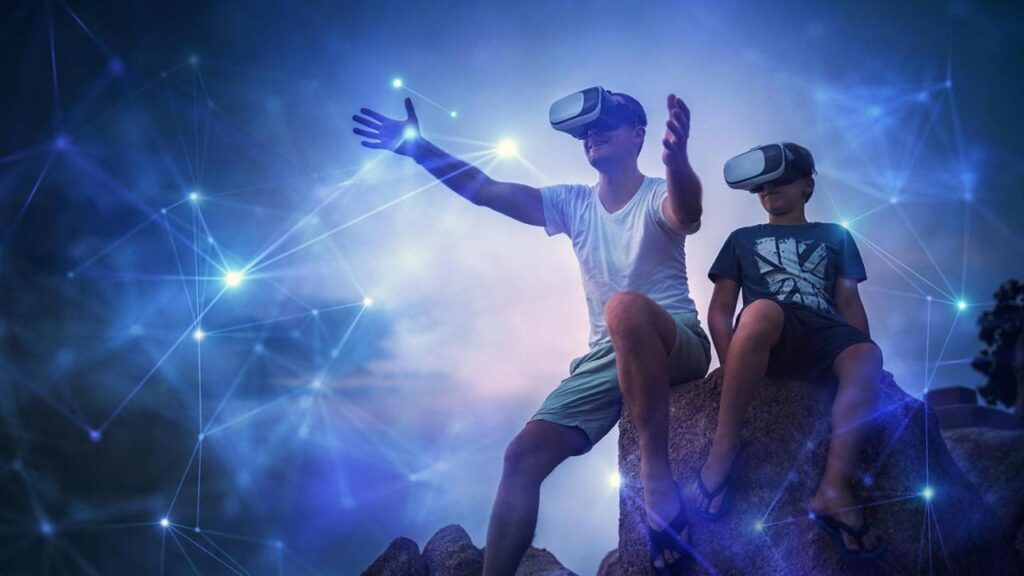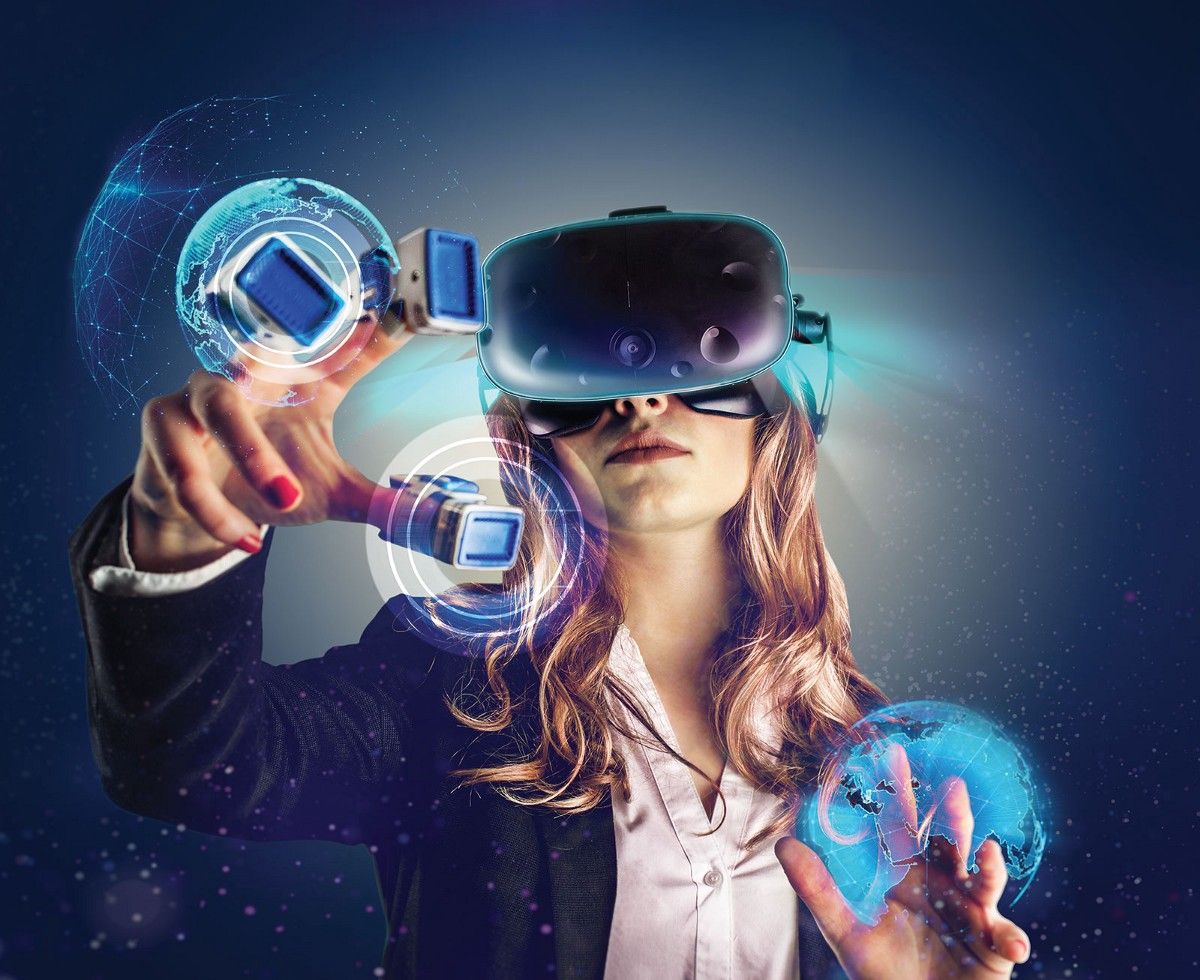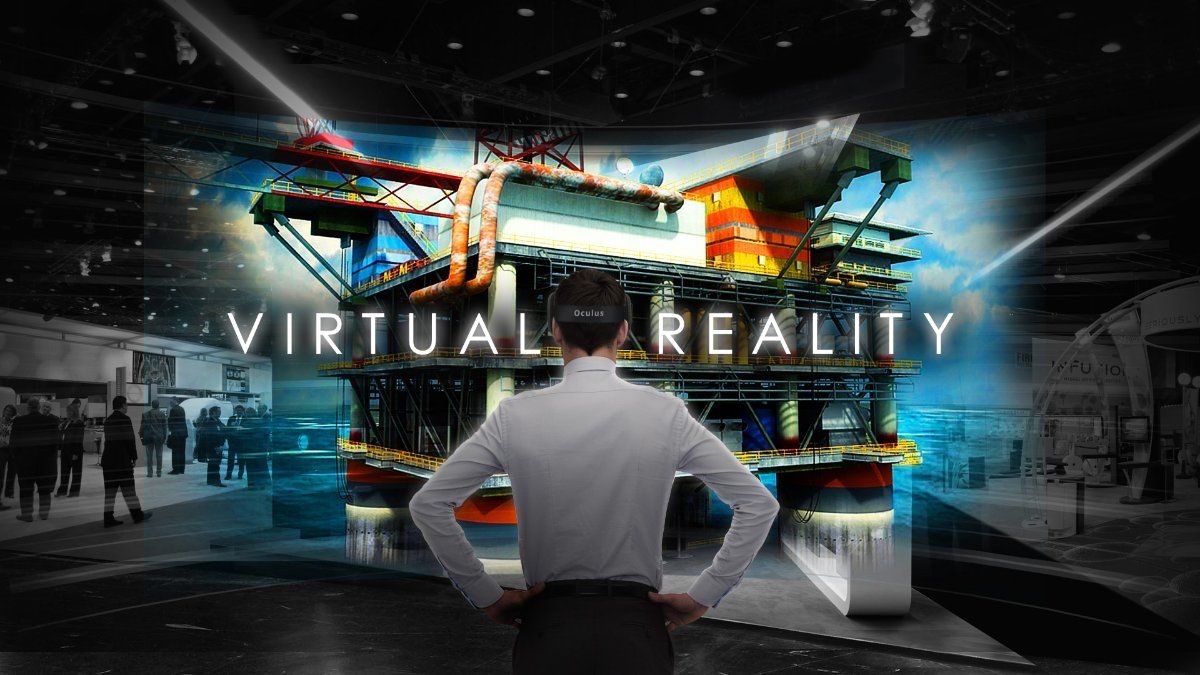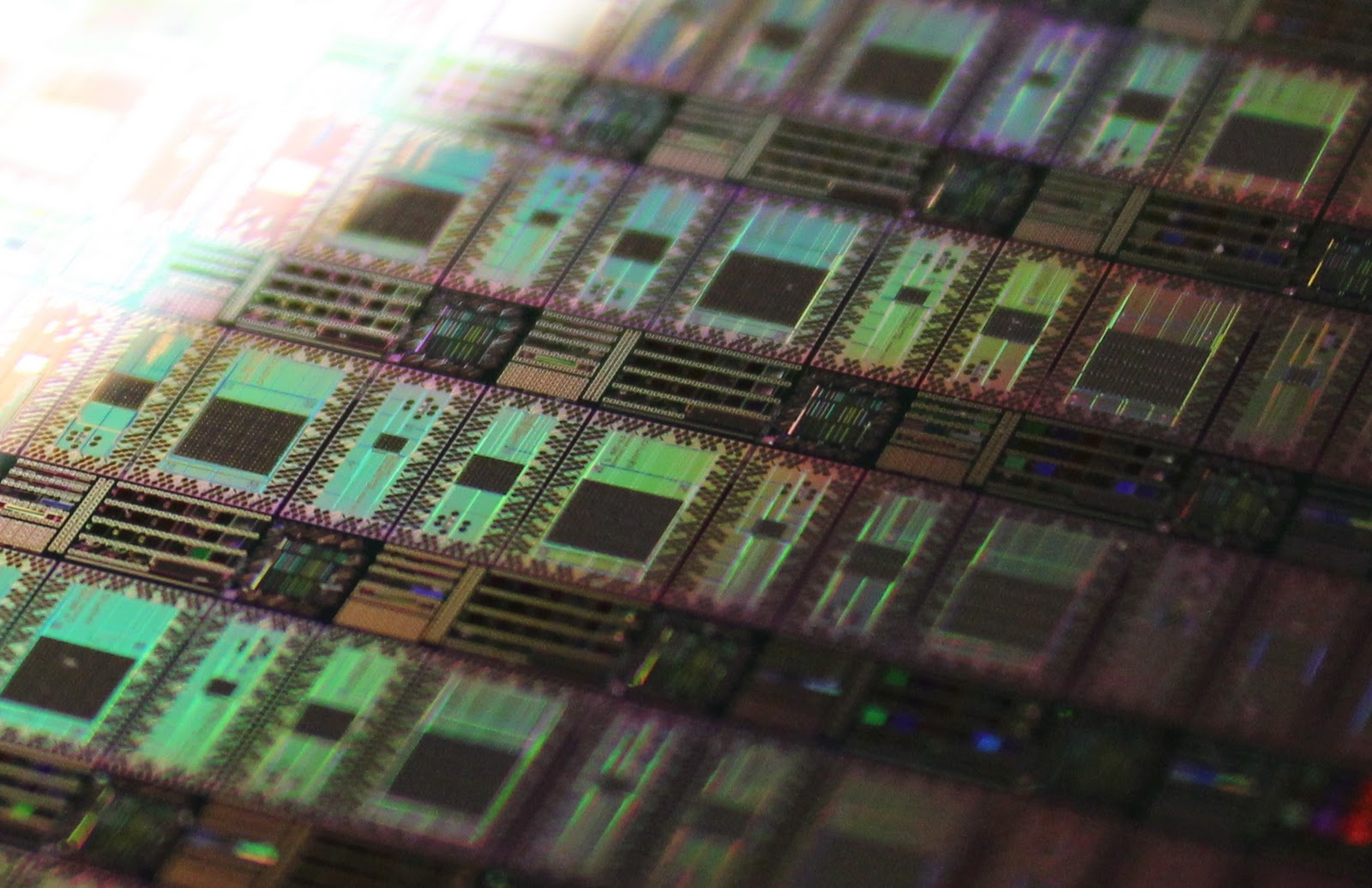The world around us is rapidly expanding beyond the tangible, physical realm into an exhilarating frontier of immersive digital landscapes. At the vanguard of this revolution is Virtual Reality (VR), a transformative technology that transports users into entirely simulated environments, cutting off their perception of the physical world and replacing it with a compelling, computer-generated one. Far from a mere gaming gimmick, VR is unlocking unprecedented new experiences across education, healthcare, entertainment, and professional training. It’s about more than just seeing; it’s about truly being there, offering an unparalleled sense of presence that fundamentally redefines interaction, learning, and entertainment, unveiling entirely new dimensions of human experience.
The Journey to Immersion: VR’s Evolution
To truly appreciate the current state and future potential of virtual reality, it’s essential to trace its fascinating, often circuitous, historical path from rudimentary concepts to sophisticated immersive systems.
A. Early Concepts: The Dawn of Simulation
The idea of creating artificial realities has captivated thinkers for centuries, long before the advent of digital computers.
- Sensorama (1962): Often cited as an early precursor to VR, Morton Heilig’s Sensorama was a mechanical device that aimed to fully immerse the user. It combined 3D visuals, stereo sound, vibrations, and even smells to simulate experiences like a motorcycle ride through New York City. While groundbreaking, it was a one-off, bulky machine, not a scalable technology.
- The Sword of Damocles (1968): Ivan Sutherland’s pioneering work at Harvard laid the theoretical foundation for modern VR. His “Sword of Damocles” was the first head-mounted display (HMD) connected to a computer, projecting simple wireframe graphics. It was too heavy for a user to wear without ceiling support, highlighting the immense technological challenges of the era.
- Myron Krueger’s Artificial Reality (1970s): Artist and computer researcher Myron Krueger explored “artificial reality” through interactive, responsive environments that reacted to users’ movements without requiring cumbersome headsets. This focused on immersion through interaction, rather than just visual display.
- Early Flight Simulators: Military and aviation industries were early adopters of immersive simulation for training. These costly, highly specialized systems offered rudimentary visual and motion feedback to train pilots, laying groundwork for future visual and haptic technology.
- Limitations of Early Efforts: These early attempts were hampered by immense technological constraints: insufficient computing power for realistic graphics, bulky hardware, high costs, and a lack of precise tracking, limiting immersion and practical application.
B. The 1980s-90s: Sci-Fi Dreams and Niche Realities
The latter part of the 20th century saw VR capture the public imagination, often fueled by science fiction, even as practical applications remained niche.
- Virtual Reality Arcade Games: Companies like Virtuality offered immersive arcade experiences, allowing users to step into virtual worlds with bulky headsets and rudimentary graphics. These were exciting but expensive and often caused motion sickness.
- NASA’s Contributions: NASA continued to invest in VR for astronaut training and remote robot control, pushing boundaries in haptic feedback and real-time simulation.
- The Rise and Fall of Consumer VR Hype: The 1990s saw a brief surge in consumer VR hype, with companies like Nintendo (Virtual Boy) attempting to bring VR to the masses. These early attempts often failed due to poor graphics, discomfort, and lack of compelling content, leading to a “VR winter.”
- VRML (Virtual Reality Modeling Language): An attempt to create 3D web pages, VRML showed promise for building virtual environments on the internet but ultimately failed due to bandwidth limitations and lack of browser support.
- Continued Academic Research: Despite commercial setbacks, academic research continued to refine tracking technologies, rendering techniques, and understanding of human perception in virtual environments.
C. The Modern Renaissance: Breakthroughs and Mainstream Potential
The 21st century, particularly the last decade, has witnessed a dramatic resurgence of VR, driven by significant technological breakthroughs.
- Oculus Rift and the Kickstarter Boom (2012): Palmer Luckey’s Oculus Rift prototype, funded via Kickstarter, reignited interest in consumer VR by demonstrating high-field-of-view, low-latency displays that significantly reduced motion sickness, proving consumer VR was finally viable.
- Mobile VR (Google Cardboard, Samsung Gear VR): These affordable solutions leveraged smartphones for VR experiences, bringing basic VR to millions and generating widespread public awareness.
- High-Fidelity PC VR (HTC Vive, Valve Index): More powerful systems offered room-scale tracking, higher resolution displays, and sophisticated controllers, enabling truly immersive and interactive experiences.
- Standalone VR (Meta Quest Series): The advent of powerful, all-in-one standalone headsets eliminated the need for external computers or sensors, making VR more accessible and user-friendly, pushing it into mainstream adoption.
- Content Ecosystem Growth: As hardware improved, so did the content, with a growing library of games, educational experiences, training simulations, and social VR applications.
This rapid progression underscores that VR is no longer a niche concept but a rapidly maturing technology poised to redefine how we interact with digital content and each other.
Core Components and Technological Foundations of Modern VR
A seamless and compelling virtual reality experience relies on the sophisticated integration of several key technological components, each pushing the boundaries of what’s possible.
A. Head-Mounted Displays (HMDs)
The HMD is the user’s window into the virtual world, providing the immersive visual and auditory experience.
- Displays (Resolution and Refresh Rate): High-resolution displays (e.g., 4K or higher per eye) minimize the “screen door effect” (seeing individual pixels). High refresh rates (e.g., 90Hz, 120Hz) are crucial for smooth motion and reducing motion sickness.
- Optics (Lenses): Specialized lenses (e.g., Fresnel, pancake optics) are used to magnify and correct distortions from the displays, creating a wide field of view (FoV) that mimics natural human vision (e.g., 100-120 degrees horizontally).
- Field of View (FoV): A wider FoV increases immersion by filling more of the user’s peripheral vision, making the virtual world feel more expansive.
- Audio Integration: High-quality spatial audio (often 3D audio) is essential for immersion, creating the illusion that sounds originate from specific directions and distances within the virtual environment.
B. Tracking Systems: Locating the User in Space
Precise tracking is paramount for immersion, minimizing latency, and preventing motion sickness. It translates the user’s movements into the virtual world.
- Head Tracking (Degrees of Freedom – DoF):
- 3 DoF (Degrees of Freedom): Tracks head rotation (pitch, yaw, roll), allowing users to look around the virtual environment. Common in simpler, mobile VR.
- 6 DoF (Degrees of Freedom): Tracks both head rotation and translational movement (up/down, left/right, forward/backward), allowing users to physically walk around and interact with the virtual space. Essential for true immersion and room-scale VR.
- Controller Tracking: Tracks the position and orientation of handheld controllers, allowing users to interact with virtual objects, wield tools, and gesture.
- Hand and Body Tracking (Emerging): More advanced systems are moving towards tracking individual finger movements (e.g., Meta Quest 3 hand tracking, haptic gloves) and full-body movement (e.g., VR suits, external sensors) for more natural interaction.
- Inside-Out vs. Outside-In Tracking:
- Inside-Out: Cameras and sensors on the HMD itself track the environment to determine the user’s position (e.g., Meta Quest series). More convenient, no external base stations.
- Outside-In: External sensors (base stations) placed in the room track the HMD and controllers (e.g., Valve Index). Generally more precise but requires setup.
C. Input Devices: Interacting with Virtual Worlds
Input devices allow users to manipulate objects, navigate, and perform actions within VR.
- Handheld Controllers: The most common input, typically incorporating buttons, joysticks, and haptic feedback to simulate touch and interaction.
- Haptic Feedback: Vibrations or forces applied to controllers or specialized haptic suits that simulate touch, weight, or impact, significantly enhancing the sense of presence and realism.
- Eye Tracking: Emerging in high-end HMDs, eye tracking allows for foveated rendering (only rendering the area the user is looking at in high resolution, saving computational power) and more natural gaze-based interactions.
- Voice Commands: Natural language processing allows users to control aspects of the VR environment using spoken commands, adding another intuitive layer of interaction.
- Brain-Computer Interfaces (BCIs – Future): A long-term vision involves BCIs allowing users to control VR environments directly with their thoughts, offering unparalleled levels of interaction for specific applications.
D. Computing Power and Rendering Engines
High-fidelity VR demands significant computational resources and specialized software.
- Powerful GPUs: Rendering two high-resolution images (one for each eye) at high frame rates requires immense graphical processing power, often provided by dedicated Graphics Processing Units (GPUs) in PCs or powerful System-on-Chips (SoCs) in standalone headsets.
- Low Latency Processing: The time delay between user movement and the corresponding visual update in the HMD (Motion-to-Photon Latency) must be extremely low (ideally under 20ms) to prevent motion sickness and maintain immersion.
- VR Engines and SDKs: Specialized software development kits (SDKs) and game engines (e.g., Unity 3D, Unreal Engine) are optimized for VR content creation, handling rendering, physics, and interaction.
- Cloud Rendering (Future): For ultra-high fidelity VR, complex scenes might be rendered in the cloud and streamed to the HMD, offloading local computational demands but requiring extremely low-latency networks (e.g., 5G).
Unveiling New Experiences: Transformative Applications of VR
Virtual Reality is far more than just a novelty; its ability to create immersive, experiential learning, training, and entertainment environments is unlocking profound new possibilities across a multitude of sectors.
A. Revolutionizing Training and Simulation
VR offers an unparalleled environment for safe, cost-effective, and highly realistic training.
- Medical Training: Surgeons can practice complex procedures in a virtual operating room, replicating intricate anatomies and potential complications without risk to patients. Medical students can explore human anatomy in 3D.
- Flight and Vehicle Simulation: Pilots, astronauts, and even vehicle drivers can undergo highly realistic training scenarios, practicing emergency procedures, navigating diverse weather conditions, or mastering new vehicle controls in a safe, repeatable virtual environment.
- Industrial and Technical Training: Workers in hazardous industries (e.g., oil & gas, manufacturing, construction) can train on dangerous machinery, practice safety protocols, or learn complex assembly processes in a virtual setting, reducing real-world risks and material waste.
- Military and Emergency Services: Soldiers can train for combat scenarios, emergency responders can practice disaster relief operations, and police officers can hone de-escalation techniques in highly realistic, consequence-free VR simulations.
B. Transforming Education and Learning
VR’s immersive nature makes learning more engaging, experiential, and effective.
- Virtual Field Trips: Students can ‘visit’ ancient Rome, explore the Amazon rainforest, walk on the moon, or delve inside the human body, bringing subjects to life in a way traditional textbooks cannot.
- Experiential Learning: Complex scientific concepts (e.g., molecular structures, planetary orbits) can be visualized and manipulated in 3D, allowing for deeper understanding through direct interaction.
- Skill Development: Learners can practice practical skills (e.g., public speaking, language immersion, complex machinery operation) in realistic virtual scenarios, receiving immediate feedback and building confidence.
- Historical and Cultural Immersion: VR can transport users to historical events or allow them to explore cultural sites that are physically inaccessible or no longer exist, fostering empathy and understanding.
C. Enhancing Entertainment and Gaming
Gaming was VR’s early adopter, and it continues to push boundaries, but entertainment goes beyond just games.
- Immersive Gaming: VR games offer unparalleled immersion, putting players directly into virtual worlds with a sense of presence that traditional gaming cannot match.
- Virtual Concerts and Events: Attending live concerts, sports events, or fashion shows in a virtual space, offering unique perspectives, interactive elements, and a global audience without physical travel.
- Interactive Storytelling: VR enables new forms of narrative, allowing users to become active participants in stories, making choices that influence the plot and experiencing events from a first-person perspective.
- Virtual Tourism: ‘Visiting’ famous landmarks, natural wonders, or even entire cities from the comfort of your home, offering accessibility for those who cannot travel physically.
D. Revolutionizing Healthcare and Therapy
VR is emerging as a powerful tool for therapeutic interventions, rehabilitation, and medical care.
- Pain Management: VR distractions can reduce the perception of pain during medical procedures (e.g., burn dressing changes) or for chronic pain conditions, offering a non-pharmacological alternative.
- Phobia Treatment: Exposure therapy for phobias (e.g., fear of heights, public speaking, spiders) can be conducted safely and controllably in virtual environments, gradually desensitizing patients.
- Rehabilitation: Stroke patients can perform physical therapy exercises in engaging virtual environments, making rehabilitation more motivating and measurable.
- Mental Health Therapy: VR can create safe spaces for therapy sessions, or simulate social situations for individuals with anxiety or autism to practice social skills.
E. Redefining Design, Engineering, and Collaboration
VR is transforming professional workflows, from product design to remote teamwork.
- Virtual Prototyping and Review: Engineers and designers can create and interact with 3D prototypes of products (e.g., cars, buildings, consumer electronics) in VR, allowing for collaborative design reviews, identifying ergonomic issues, and making changes before physical production.
- Architectural Visualization: Architects can walk clients through virtual models of unbuilt buildings, allowing them to experience the space, light, and flow before construction begins.
- Remote Collaboration: Geographically dispersed teams can meet in virtual meeting rooms, interacting with 3D models, whiteboards, and presentations as if they were in the same physical space, enhancing productivity and engagement for remote work.
- Data Visualization: Complex datasets can be visualized in immersive 3D environments, allowing scientists and analysts to uncover patterns and insights that might be hidden in 2D graphs.
Navigating the Challenges of Virtual Reality Adoption
Despite its immense potential, the widespread adoption and seamless integration of VR face several significant challenges that must be addressed for it to truly become a ubiquitous technology.
A. Cost and Accessibility
While standalone VR headsets have become more affordable, the initial investment can still be a barrier for many consumers and small businesses.
- Hardware Costs: High-end VR systems (PC VR) still require powerful and expensive computers. Even standalone headsets, while more accessible, represent a significant discretionary purchase.
- Content Costs: High-quality VR content often comes with a premium price tag, limiting the initial library for new users.
- Geographical Disparities: Access to reliable broadband internet and technological infrastructure remains a challenge in many parts of the world, hindering widespread VR adoption.
B. Hardware Limitations and User Comfort
Current VR hardware, while rapidly improving, still has limitations that impact user experience and comfort.
- Motion Sickness (Cybersickness): This remains a significant hurdle. It’s often caused by a mismatch between visual motion in the VR environment and the lack of corresponding physical motion detected by the inner ear. While advances in refresh rates and latency have helped, it’s not entirely eliminated.
- Resolution and Field of View: Despite improvements, current displays still have a lower resolution and narrower field of view compared to natural human vision, leading to the “screen door effect” or a feeling of looking through binoculars.
- Weight and Bulkiness of HMDs: Prolonged use can lead to discomfort, facial pressure, and sweating due to the weight and bulk of the headsets.
- Battery Life (Standalone): For standalone headsets, limited battery life can interrupt immersive experiences, requiring frequent recharging.
C. Content Creation and Ecosystem Development
Building compelling, high-quality VR content is complex and resource-intensive.
- High Development Costs: Creating immersive 3D environments, interactive experiences, and realistic physics simulations for VR requires specialized skills, significant time, and substantial financial investment.
- Limited Talent Pool: There’s a shortage of experienced VR developers, designers, and storytellers, slowing down content creation.
- Discovery and Distribution: Finding and distributing VR content can be challenging, as the ecosystem is still maturing compared to traditional app stores.
- Lack of Killer Apps: While many compelling experiences exist, a truly “killer app” that drives mass adoption akin to the smartphone’s early apps is still sought after.
D. Data Privacy and Security Concerns
As VR becomes more sophisticated, it will gather vast amounts of highly personal data, raising significant privacy and security implications.
- Biometric Data: Eye-tracking, hand-tracking, and potentially even physiological data (e.g., heart rate, brain activity) collected by VR systems could reveal highly sensitive personal information.
- Behavioral Data: Detailed tracking of user movements, interactions, and gaze patterns within virtual environments could create incredibly precise digital profiles.
- Cybersecurity Vulnerabilities: VR systems, like any networked device, are susceptible to cyberattacks, potentially leading to data breaches or manipulation of the virtual environment.
- Ethical Use of Data: Clear guidelines and regulations are needed for how this highly sensitive VR data is collected, stored, used, and shared, ensuring user consent and preventing misuse.
E. Social and Ethical Implications
The increasing immersion and realism of VR raise profound social and ethical questions.
- Reality vs. Virtual Reality: Prolonged immersion could blur the lines between real and virtual experiences, potentially leading to social isolation, psychological dependence, or difficulty distinguishing reality.
- Harassment and Online Behavior: Virtual environments can be fertile ground for online harassment, bullying, and inappropriate behavior, requiring robust moderation and safety protocols.
- Digital Divide Amplification: If VR access is uneven, it could create new forms of digital inequality, where some have access to advanced learning and social experiences while others do not.
- Workplace Transformation: While offering benefits, VR for remote work or training could also raise questions about worker monitoring, privacy, and the nature of social interaction in virtual offices.
Best Practices for Harnessing Virtual Reality’s Potential
To effectively leverage VR and unlock its transformative power, developers, businesses, and educators must adhere to best practices that prioritize user experience, ethical considerations, and strategic implementation.
A. Prioritize User Comfort and Immersion Above All
The success of any VR experience hinges on user comfort and a strong sense of presence.
- Minimize Latency: Strive for the lowest possible motion-to-photon latency (ideally under 20ms) to prevent motion sickness.
- Optimize Performance: Ensure high, consistent frame rates (e.g., 90 FPS or higher). Dropped frames are a major cause of discomfort.
- Careful Movement Design: For locomotion, prioritize teleportation or smooth locomotion with comfort settings (e.g., blink vignettes) to reduce motion sickness.
- Ergonomics: Design HMDs and controllers for comfort during prolonged use, with good weight distribution and adjustability.
- Spatial Audio: Leverage 3D spatial audio to enhance immersion and provide crucial environmental cues.
B. Design for Intuitive Interaction and Natural User Interfaces
VR’s power comes from direct interaction. Designs should feel natural and effortless.
- Hand Presence: Prioritize hand tracking or well-designed controllers that feel like extensions of the user’s hands.
- Direct Manipulation: Allow users to directly grab, push, pull, and interact with virtual objects as they would in the real world.
- Contextual UI: Keep user interfaces minimal and contextual, appearing only when needed and integrating naturally into the 3D environment, avoiding flat 2D menus where possible.
- Voice and Gaze Integration: Explore voice commands and eye-tracking (where available) for additional intuitive input methods, reducing reliance on controller buttons.
C. Focus on Value-Driven Content and Applications
Avoid creating VR just for the sake of it. Develop applications that solve real problems or offer truly unique experiences.
- Solve a Problem: Identify specific challenges where VR’s unique immersive capabilities offer a superior solution compared to traditional methods (e.g., complex training, therapy, remote collaboration for 3D design).
- Unique Experiences: Leverage VR’s strengths to create experiences impossible in the real world (e.g., exploring impossible architectures, interacting with fantastical creatures, experiencing historical events firsthand).
- Clear User Journey: Design a clear and intuitive user journey within the VR application, guiding users through the experience without confusion.
- Short, Engaging Sessions (Initially): For new users, keep sessions relatively short and highly engaging to build comfort and familiarity before introducing longer experiences.
D. Prioritize Data Privacy and Security Ethically
Given the sensitive data VR collects, ethical data practices are paramount.
- Transparency and Consent: Be completely transparent with users about what data is collected, how it’s used, and who it’s shared with. Obtain explicit consent.
- Data Minimization: Collect only the data absolutely necessary for the VR experience to function.
- Robust Security: Implement strong encryption, access controls, and cybersecurity measures to protect user data from breaches.
- Anonymization/Pseudonymization: Where possible, anonymize or pseudonymize sensitive data to protect user identities.
- Ethical AI Use: Ensure any AI integrated into VR (e.g., for personalization, behavioral analysis) is developed and used ethically, avoiding bias and manipulation.
E. Iterate Based on User Feedback and Performance Data
VR development is an iterative process. Continuous feedback and data analysis are crucial for refinement.
- Usability Testing: Conduct extensive usability testing with diverse user groups to identify comfort issues, interaction problems, and areas for improvement.
- A/B Testing in VR: Test different visual elements, interaction flows, or comfort settings within the VR environment to optimize performance and user engagement.
- Performance Monitoring: Continuously monitor frame rates, latency, and resource usage to ensure a smooth and comfortable experience across target hardware.
- Post-Mortem Analysis: Learn from any issues or discomfort reported by users, conducting thorough post-mortems to understand root causes and implement corrective actions.
F. Consider Hybrid Approaches and Progressive Immersion
Not every experience needs to be fully immersive VR. Consider how VR can augment or be augmented by other technologies.
- Mixed Reality (MR) / Augmented Reality (AR): Explore how VR can blend with AR to create mixed reality experiences where virtual objects interact with the real world, offering new levels of utility and interaction.
- WebVR/WebXR: Leveraging web technologies for VR experiences that are accessible directly through a browser, lowering barriers to entry.
- Progressive Enhancement: Design experiences that can scale across different levels of immersion, from basic 360-degree videos to fully interactive room-scale VR.
The Future Trajectory of Virtual Reality: Beyond Today’s Horizons
The journey of virtual reality is far from over. The next decade promises even more radical advancements that will push the boundaries of immersion, accessibility, and utility, reshaping our digital and physical lives.
A. Hyper-Realistic Graphics and Haptics
The drive for photorealism will continue, coupled with increasingly sophisticated sensory feedback.
- Perceptual Immersion: HMDs will feature much higher resolutions, wider fields of view, and variable focus (light field displays) to match human vision more closely, eliminating motion sickness and increasing visual fidelity to near-perfect levels.
- Advanced Haptic Systems: Full-body haptic suits, haptic gloves with force feedback, and even haptic flooring will allow users to physically feel textures, temperatures, impacts, and resistance, making virtual interactions indistinguishable from physical ones.
- Olfactory and Gustatory Integration (Emerging): Research into devices that can generate smells and even tastes in sync with virtual experiences will emerge, aiming for true multi-sensory immersion.
B. Seamless, Lightweight Hardware
Headsets will become significantly smaller, lighter, and more comfortable, eventually resembling everyday eyewear.
- AR/VR Convergence: True mixed-reality devices will seamlessly blend virtual content with the real world, allowing users to effortlessly switch between AR overlays and full VR immersion without changing devices.
- Wireless and Standalone Dominance: Untethered experiences will be the norm, with powerful mobile processors and efficient battery technologies.
- Contact Lenses / Retinal Projection (Long-term): The ultimate vision includes VR/AR embedded directly into contact lenses or projected directly onto the retina, making the technology truly invisible and always-on.
C. AI-Powered Virtual Worlds and Avatars
Artificial Intelligence will infuse intelligence and dynamism into virtual environments and characters.
- Intelligent NPCs and Avatars: AI will power highly realistic and emotionally responsive non-player characters (NPCs) and user avatars, capable of natural language interaction, nuanced expressions, and adaptive behavior, making virtual social interactions more authentic.
- Generative AI for Content Creation: AI will autonomously generate vast, complex virtual worlds, interactive storylines, and dynamic environments based on high-level prompts, drastically reducing content creation costs and accelerating ecosystem growth.
- Adaptive Environments: Virtual worlds will dynamically adapt to user behavior, preferences, and physiological states, creating truly personalized and responsive experiences.
D. Brain-Computer Interfaces (BCIs) for Direct Interaction
The most radical future vision involves direct thought control of VR experiences.
- Intuitive Control: BCIs will allow users to navigate virtual worlds, manipulate objects, and even communicate with virtual characters using only their thoughts, offering unprecedented levels of intuitive control.
- Sensory Input Beyond Physical Limitations: BCIs could potentially enable users to ‘feel’ or ‘perceive’ aspects of the virtual world directly through brain stimulation, opening entirely new sensory experiences.
- Challenges: Ethical concerns, data security, and the immense complexity of brain decoding remain significant hurdles.
E. The Spatial Web and Open Metaverse
The future of VR is intertwined with the development of an open, interoperable, and persistent Spatial Web or Metaverse.
- Interoperable Avatars and Assets: Users will be able to seamlessly move their avatars, digital assets (e.g., NFTs), and identities across different virtual worlds and platforms, breaking down current walled gardens.
- Decentralized Virtual Economies: Blockchain technology will underpin secure, transparent, and user-owned virtual economies within the metaverse, allowing for digital ownership and commerce.
- Ubiquitous Access: The Spatial Web will be accessible across various devices, from VR headsets to AR glasses, smartphones, and traditional screens, ensuring broad participation.
Conclusion
Virtual Reality, once the stuff of science fiction, is rapidly maturing into a transformative technology that is unveiling new experiences across nearly every facet of human endeavor. Its unique ability to immerse users in entirely simulated environments is revolutionizing training, making education profoundly more engaging, enhancing entertainment beyond imagination, and offering novel therapeutic pathways in healthcare. Furthermore, it’s streamlining professional workflows in design, engineering, and global collaboration, proving its utility far beyond the realm of gaming.
While significant challenges persist, particularly concerning hardware comfort, accessibility, content creation costs, and the critical ethical considerations around data privacy and societal impact, the relentless pace of innovation suggests a bright future. The trajectory points towards hyper-realistic graphics, seamlessly integrated and lightweight hardware, AI-powered intelligent virtual worlds, and even the eventual promise of direct brain-computer interfaces. As VR converges with augmented reality and forms the foundation of the Spatial Web, it will not merely offer new experiences; it will fundamentally redefine our perception of reality, reshape our interactions, and unlock boundless potential, truly cementing its role as a cornerstone of our digital future.














